What is Upholstery?
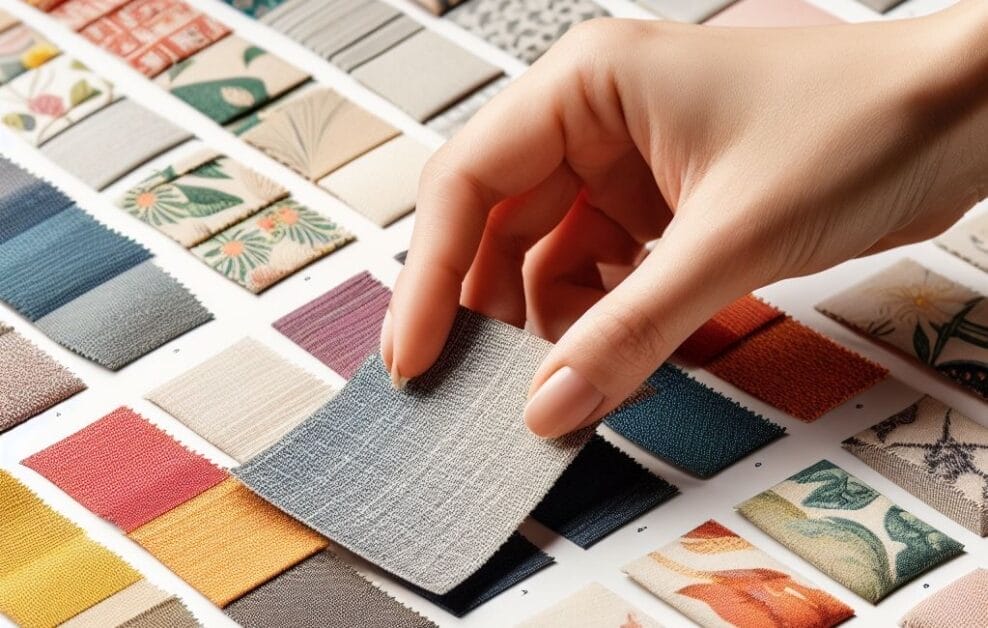
Have you ever found yourself sinking into an armchair at the end of a long day, wondering about the material that makes it so comfortable? Well, you’ve got upholstery to thank for that.
Upholstery provides furniture with padding, springs, webbing, and fabric or leather covers. Common fabrics include leather, cotton, linen, and velvet.
Throughout this article, I’ll delve deeper into what upholstery is all about. From its origins to different types of materials used in upholstered furniture – we’ll cover it all!
Upholstery: An Overview

Diving right into it, upholstery is the material used to stuff and cover furniture. It’s a craft that dates back centuries, with historical records showing its use in ancient societies such as Egypt and Rome.
The materials used for upholstery can range from fabric and leather to synthetic materials like vinyl. To break it down further, there are three key components in any piece of upholstered furniture:
| Upholstery Components | Description |
|---|---|
| Frame | Provides shape to the furniture |
| Support System | Typically, springs or webbing for support |
| Padding & Covering | Commonly known as ‘the upholstery’ |
Types of Upholstery
The world of upholstery is vast and varied. It’s an art form that requires a combination of technical skill and creativity. Upholstery involves covering furniture, primarily seating, with padding, springs, fabric, or leather.
Traditional Upholstery

- Traditional upholstery is a technique that dates back centuries. It uses materials such as coil springs and animal hair, hand-stitched together using strong linen twine.
- This method adds firmness and shape to the seat for ultimate comfort. The process might seem tedious, but believe me when I say it’s worth every stitch.
Modern Upholstery
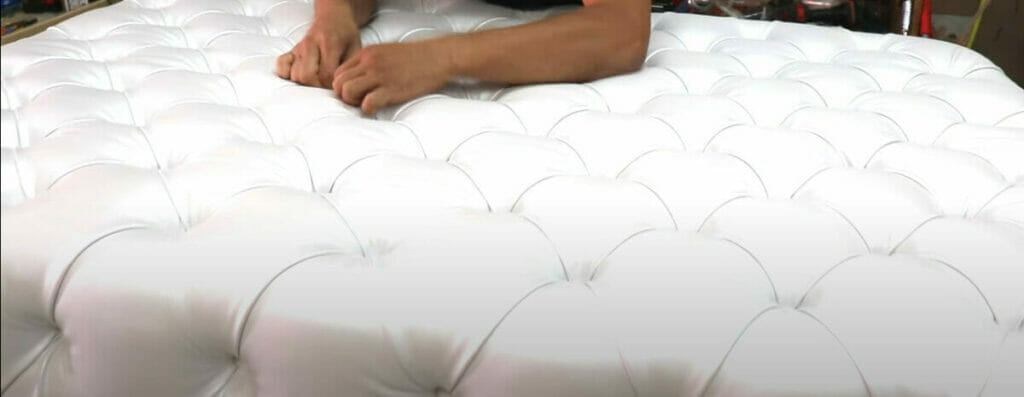
- This refers to newer methods and materials designed for efficiency and often aligned with contemporary design aesthetics.
- Modern upholstery techniques have evolved to use synthetic materials like foam and fiberfill. Depending on the upholstered furniture, these can be applied in layers or used as molded shapes.
Upholstery Materials
These are the backbone of every piece of furniture. Every couch you’ve ever sunk into an armchair you’ve curled up on starts with these essential elements.
Common Upholstery Fabrics
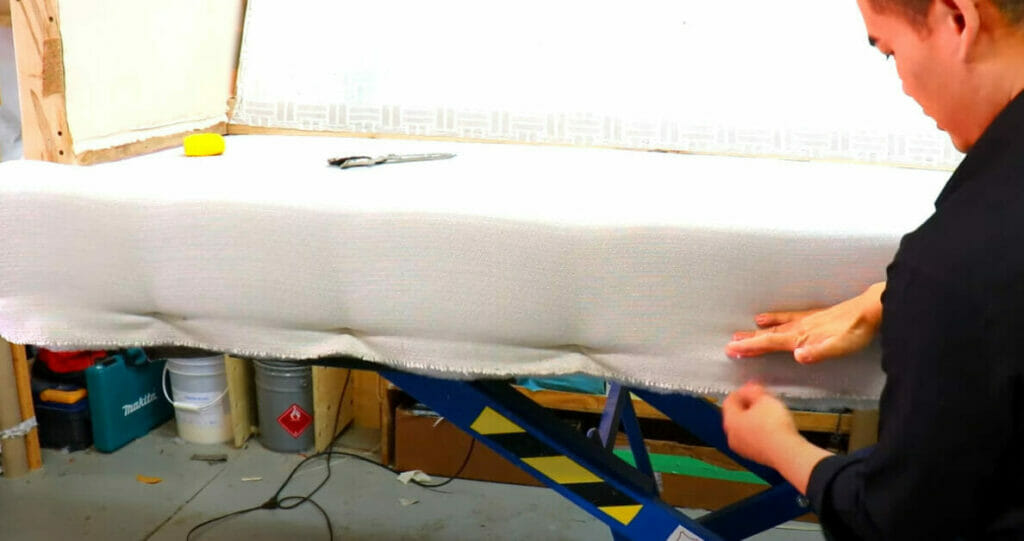
Firstly, we have fabrics. Different types of upholstery fabrics can dramatically change the look and feel of a piece of furniture. Here are some common ones:
- Leather: Known for its durability and classy appeal, it’s often used in high-end furniture.
- Cotton: It’s popular due to its resistance to fading and wear. Durable and versatile, cotton can be dyed in various colors, offering a soft texture.
- Linen: While not as durable as other options, linen gives a light, fresh look that many folks love.
- Wool: This fabric is warm and resilient but requires more maintenance than others.
- Horsehair: Historically used in traditional upholstery for padding and stuffing, horsehair is known for its durability and ability to maintain shape.
- Velvet: A soft, plush fabric that adds luxury to any piece.
- Synthetic Microfiber: Highly durable and resistant to spills and stains.
- Vinyl: Offers a similar look to leather but at a more affordable price.
- Silk: A delicate and refined choice, best for low-traffic areas.
Padding and Cushioning Materials
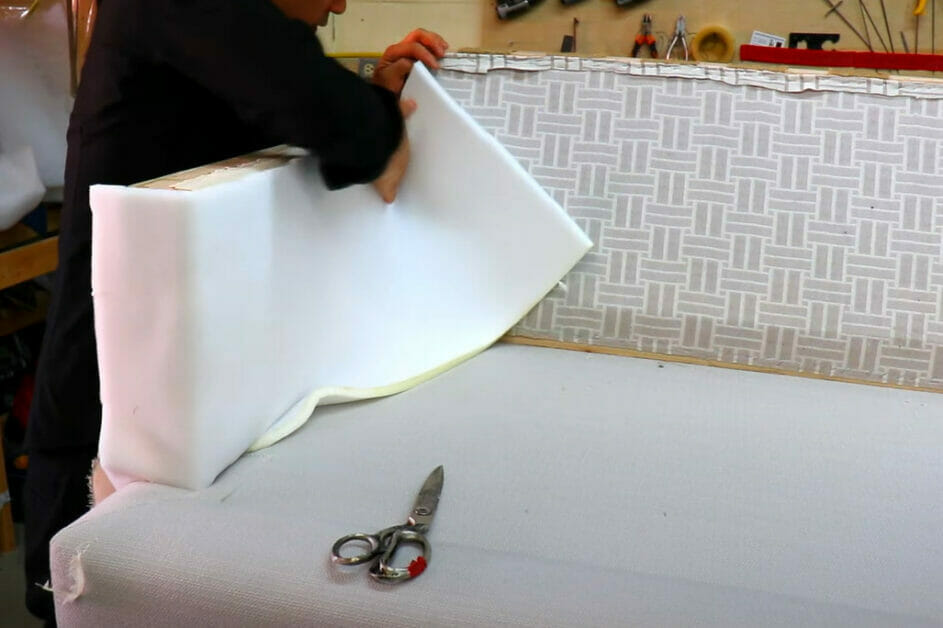
Next, let me tell you about padding materials – the stuff that comforts your seat!
- Foam: Commonly used in modern furniture for cushioning, foam can vary in density to provide different firmness levels.
- Polyester: Often used in fabric blends, polyester is durable, easy to maintain, and resists wrinkling.
- Cotton batting: which has less bounce.
- Feather down: for luxury softness.
- Latex: Natural material that’s resistant to mold and dust mites.
- Spring Coils: Provide supportive bounce to cushions.
- Memory Foam: Adjusts to the body for optimal comfort.
- Dacron: Synthetic polyester material that helps maintain cushion shape.
Upholstery Tools
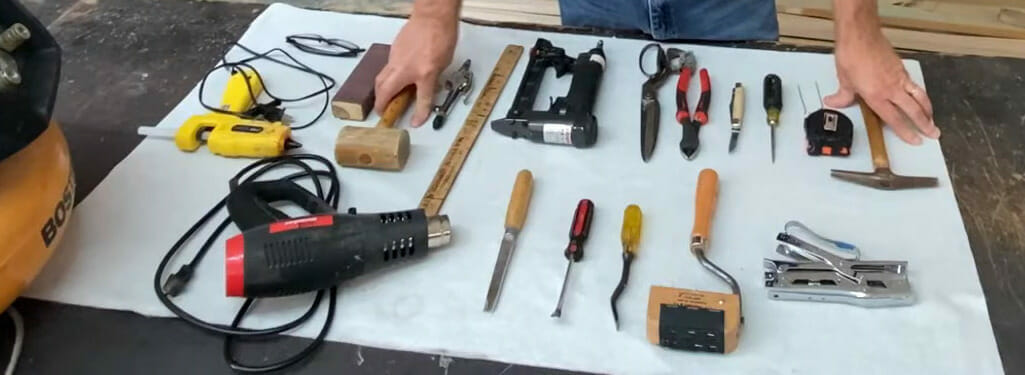
Whether giving an old chair a new life or crafting a custom piece from scratch, the right tools in your arsenal can ensure precision, ease, and excellence in every stitch and staple. Let’s delve into the essential tools every upholstery enthusiast should know about.
- Webbing Stretcher: Helps ensure webbing is installed tightly.
- Tack Hammer: For securing tacks efficiently.
- Staple Gun: Useful for fastening fabric to furniture frames.
- Upholstery Scissors: Designed for cutting fabric with precision.
- Upholstery Needles: Varied lengths and types for different stitching tasks.
- Upholstery Regulator: A tool to adjust and even out batting or stuffing.
- Button Tufting Needle: Used for creating tufted details in furniture.
- Ply Grip: Ensures a clean and smooth edge finish.
- Upholstery Pliers: Useful for removing old staples and tacks.
Upholstery Processes
Let’s dive into the heart of upholstery and discover how that comfy chair or sleek sofa comes to life!
Step 1: Frame Preparation
Every masterpiece starts with a solid foundation. In upholstery, it’s all about prepping the frame. This means ensuring it’s sturdy, free from defects, and shaped to perfection.
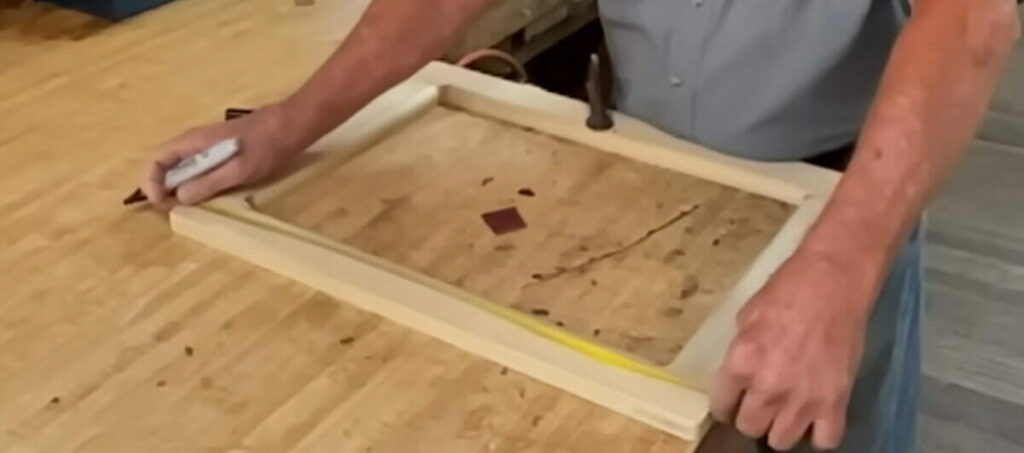
- Step 1: Selection. Opt for kiln-dried hardwood like oak, beech, or alder. These woods resist warping and provide solid support.
- Step 2: Shaping. Use coarse to fine-grit sandpapers in sequence, smoothing all surfaces and prepping them for subsequent steps.
Step 2: Springing
Now, we move on to the bounce of the piece. Springs are attached to the frame, adding support and comfort. Various spring types and arrangements might be used depending on the design and desired firmness.

- Step 1: Spacing. Lay springs in parallel rows, spaced around 3 to 4 inches apart, ensuring even distribution.

- Step 2: Securing. Fasten the springs to the frame using clinch-it clips or nails. Test the bounce by applying weight.
Step 3: Stuffing
It’s time to add some muscle! Stuffing provides the cushion and shape. Whether the plush foam feel or the horsehair’s firmness, this step is about getting the feel right.

- Step 1: Layering. After springs, stretch a burlap sheet tightly over the frame, stapling or tacking it in place.
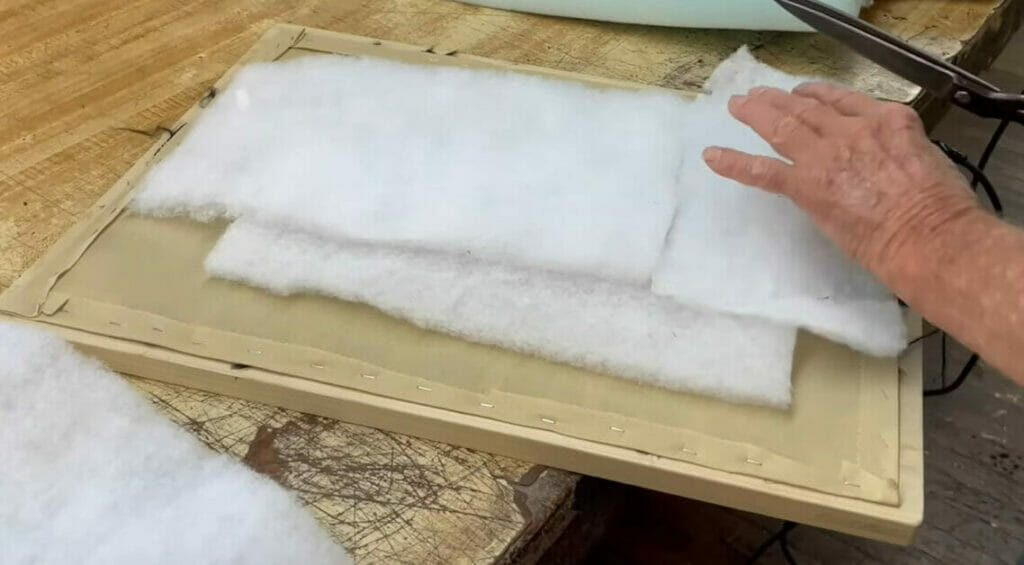
- Step 2: Add Padding. Use high-density foam or natural materials like horsehair or cotton batting for a plush feel. This layer should be a bit larger than the frame.

- Step 3: Shape. Mold and trim excess to ensure the stuffing matches the contour of the frame.
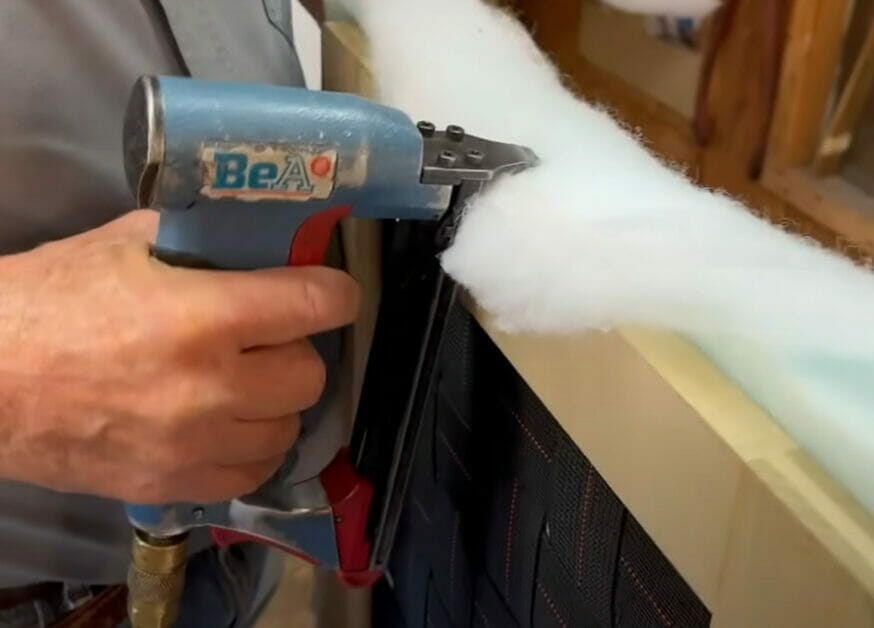
- Step 4: Secure. Use long upholstery needles and twine to keep the stuffing in place, ensuring it doesn’t shift over time.
Step 4: Covering with Fabric or Leather
This is where the magic happens. The chosen fabric or leather material is stretched and secured over the stuffing, transforming the piece. It’s not just about aesthetics; the covering protects the inner materials and adds to the durability.

- Step 1: Measurement. Lay out the material, then trace the shape of your furniture onto the backside, considering seams and pattern alignment.
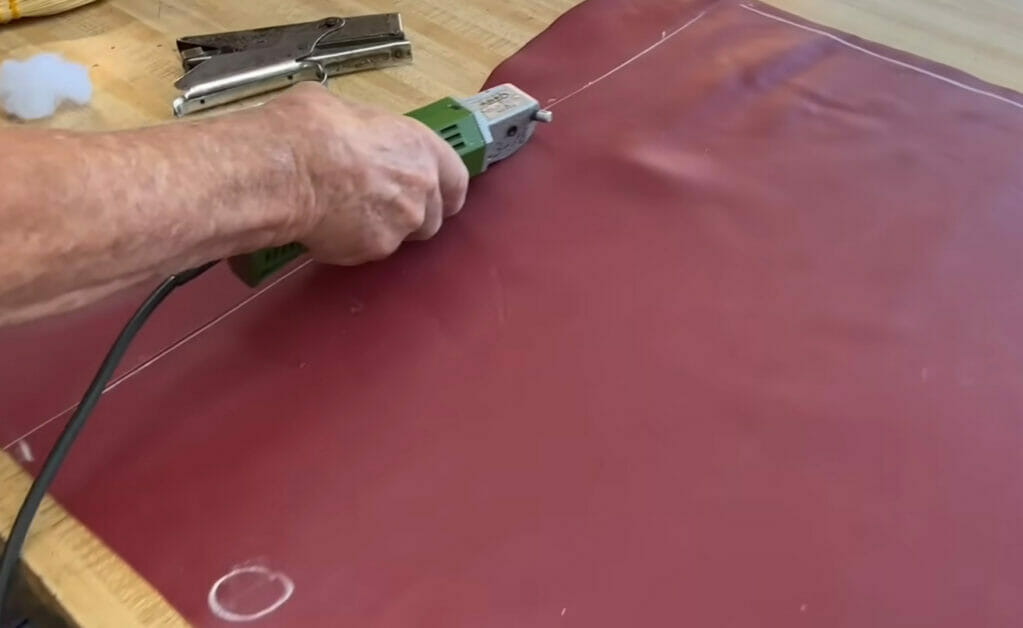
- Step 2: Cutting. Use sharp, high-quality shears for clean edges, always providing an extra margin.
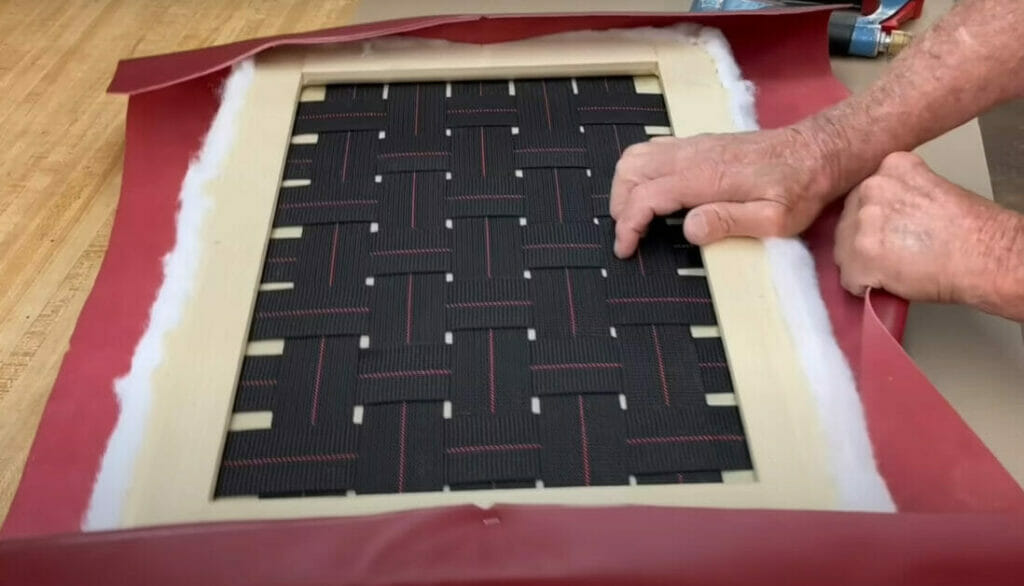
- Step 3: Stretching. Begin from the center, pulling the fabric taut, ensuring no puckering or sagging.

- Step 4: Securing. Staple or tack from the center outwards, periodically checking the fabric’s front side for a smooth appearance.
Step 5: Finishing Touches
The final step is like adding accessories to a well-tailored suit. Buttons, trims, and other details are added, enhancing the piece’s look and functionality. These small touches make your furniture unique and tailored to your style.
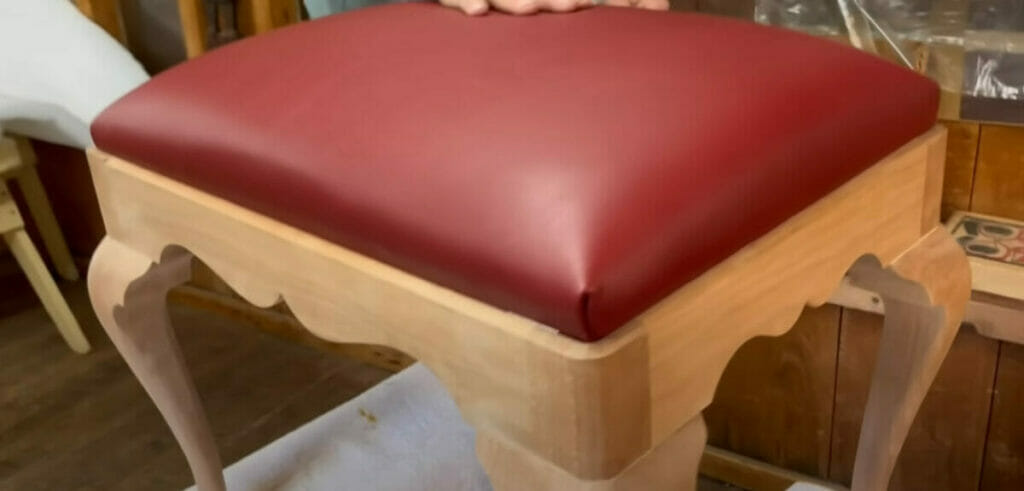
- Detailing: Consider decorative braiding or fringe to hide tacks or staples, elevating the furniture’s look.
- Buttoning: If tufting, mark spots evenly, and use an upholstery needle to thread buttons through.
- Stitching: For seams or areas where tacks won’t work, use blind stitches or other upholstery-specific techniques for a seamless look.
Caring for Upholstered Furniture
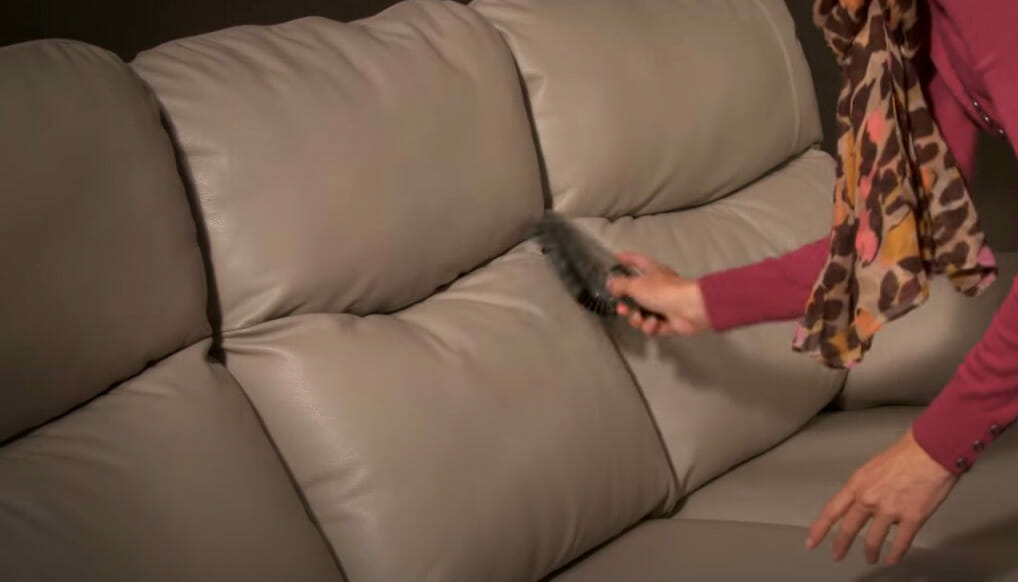
Now that we’ve delved into the intricate world of upholstery let’s switch gears a bit. It’s time to discuss something important: how to care for and maintain your upholstered pieces.
- Regular cleaning is key. It’s not just about removing stains or spills (though that’s certainly part of it). Regular upkeep keeps your furniture looking fresh and extends its life span. So, what does this involve?
- Vacuuming: This should be done at least once a week. Use an upholstery attachment if you have one.
- Spot Cleaning: Accidents happen! When they do, tackle them immediately with an appropriate cleaner.
- Deep Cleaning: Aim for a deep clean every 12-24 months, depending on use and household conditions.
- Keep furniture out of direct sunlight. Direct sunlight can cause upholstery fabrics to fade and weaken over time. Position furniture away from windows or use blinds to protect them from UV damage.
- Rotate cushions regularly. Consistent use of specific cushions can cause uneven wear. Regularly rotating them ensures a uniform look and extends their lifespan.
- Avoid placing hot items directly on upholstery. Hot items can damage the upholstery’s fibers and cause discoloration. Always use protective barriers to prevent direct contact with heat.
Upholstery Trends: What’s Making Waves in Furniture Design
Dive into the latest trends shaping the world of furniture design and discover how the fusion of tradition with contemporary flair is reshaping our interiors.
- Sustainable Materials: As the world leans towards eco-friendly choices, upholstery isn’t left behind. Materials like organic cotton, bamboo fabric, and recycled polyester are in the limelight. They’re good for the planet and bring durability and unique textures.
- Performance Fabrics: With homes becoming multifunctional spaces, there’s a surge in the use of performance fabrics. Think fabrics that resist stains are easy to clean, and can withstand daily wear and tear. Especially useful for homes with kids and pets.
- Textural Plays: It’s not just about the look but also the feel. Combining different textures – like a sleek leather sofa with a nubby throw or velvet cushions – is catching on. The contrasting feel under your fingers adds a new dimension to the interiors.
- Bold Patterns and Colors: While neutrals will always have their place, there’s a growing love for bold prints, especially in larger pieces of furniture. From geometric patterns to vibrant hues, these choices are becoming conversation starters.
- Natural Tones & Earthy Palettes: On the flip side of bold is the serene and calming. Inspired by nature, earthy tones like greens, browns, and beiges are making a significant appearance. They bring a touch of tranquility to spaces, making them perfect for relaxation zones.
- Vintage Revival: What’s old is new again! Vintage and retro patterns, reminiscent of the ’60s and ’70s, are weaving their way back. But with a modern twist, ensuring they fit seamlessly with today’s designs.
- Tech-Infused Upholstery: The tech world is blending with upholstery. We’re seeing fabrics integrated with technology, like those that can resist bacteria or adapt to body temperatures for enhanced comfort.
Frequently Asked Questions
- I’ve Heard About “8-Way Hand Tied Springs.” Why Is It Special?
- So, 8-way hand-tied springs are the gold standard in traditional upholstery. The springs are tied in eight directions, creating a super supportive and durable base. It’s a little more labor-intensive, but trust me, it’s the kind of craftsmanship you want beneath your behind!
- Foam vs. Feather Down: Which One’s for Me?
- The foam gives you a firm and supportive feel, while feather down is about that luxurious softness. It depends on what you’re after. If you love sinking into a cloud, go with feather down. If you want something more resilient, foam’s your friend.
- How Can I Upholster for Allergies?
- There are hypoallergenic upholstery options out there. Consider fabrics like microfiber, which repel allergens, or go for leather and vinyl that are easy to wipe down. Regular cleaning and vacuuming with HEPA filters can keep sneezing at bay.
- Any Secrets for Making Upholstery Look Brand New?
- Oh, you bet! Regular cleaning is key. For a quick refresh, sprinkle some baking soda, let it sit for 15-20 minutes, then vacuum up. It’ll deodorize and refresh the fabric. Every now and then, please give it a good steam cleaning to revive and sanitize.
- How Safe Are Upholstery Chemicals?
- Safety first! Many fabrics come treated with chemicals for durability and stain resistance. If you’re concerned, look for upholstery labeled as “Oeko-Tex” or “GREENGUARD Gold” certified. These have been tested for harmful chemicals and deemed safe for indoor use.
- To Tuft or Not to Tuft: What’s the Deal?
- Tufting, those little indents on upholstered furniture, adds a classic, sophisticated look. However, it can collect dust and crumbs. If you love the style, go for it! Just be prepared for a little extra TLC when cleaning.
References
Website Resources:
- Upholstery Resource. https://www.upholsteryresource.com/
- Kim’s Upholstery. https://kimsupholstery.com/
Video References:
ALO Upholstery
AT Restoration Plus
Mark’s Upholstery
Epic Woodworking
G Plan
